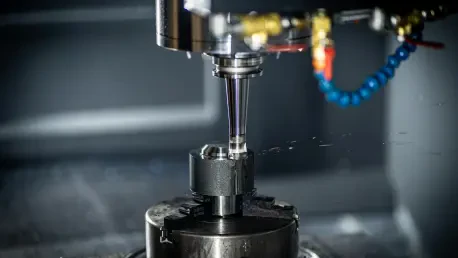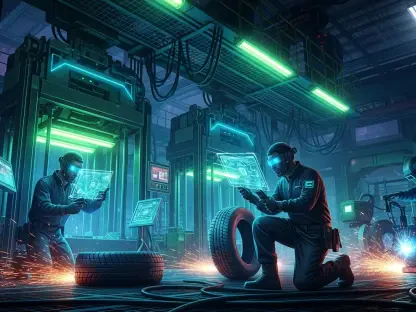In the heart of Santa Clara, California, a local precision machining shop is making waves by embracing cutting-edge technology and contributing to the resurgence of American manufacturing. Silicon Valley Elite Manufacturing (SVEM), based at 460 Aldo Ave., has recently unveiled a larger facility to meet the growing demand for domestic production. This expansion, marked by a symbolic ribbon-cutting ceremony involving a robot, reflects a broader trend of reshoring—bringing manufacturing back to U.S. soil. With community leaders, city officials, and employees in attendance, the event highlighted SVEM’s commitment to innovation and its pivotal role in the regional economy. As industries like aerospace, medical devices, and robotics increasingly rely on high-quality components, SVEM stands poised to capitalize on this momentum, blending advanced machinery with a dedication to craftsmanship.
Driving Economic Growth through Manufacturing
Regional Impact and Job Creation
The expansion of SVEM is more than just a business milestone; it represents a significant boost to Santa Clara’s economy, where manufacturing stands as the second-largest employer, accounting for 18% of jobs. City statistics underscore the importance of this sector, and Reena Brilliot, Santa Clara’s Director of Economic Development and Sustainability, has emphasized that such growth fosters high-quality employment opportunities. Beyond direct hires, the ripple effect of manufacturing amplifies its value. A study by the Economic Policy Institute reveals that for every 100 durable manufacturing jobs, such as those in precision machining, an additional 744 indirect jobs are generated. SVEM’s decision to expand locally strengthens this economic web, supporting suppliers, service providers, and other interconnected businesses while reinforcing the region’s status as a hub for industrial innovation.
Strengthening the Local Ecosystem
Beyond job numbers, SVEM’s growth fortifies Silicon Valley’s unique ecosystem, where ideas transform into tangible products. The company’s focus on precision through computer numerical control (CNC) machining allows it to serve critical sectors with components that meet exacting standards. This capability not only attracts clients from high-tech industries but also encourages collaboration with other local firms. Economic leaders in the area have noted that such expansions signal a robust manufacturing community, capable of sustaining innovation cycles from prototype to market. By staying rooted in Santa Clara, SVEM contributes to a localized supply chain that reduces dependency on overseas production, aligning with national reshoring efforts. This strategic move ensures quicker turnaround times for clients and bolsters regional resilience against global supply chain disruptions.
Embracing Technology and Community Collaboration
Innovation at the Core of Operations
At the heart of SVEM’s expansion lies a deep commitment to technological advancement, particularly through CNC machining, which Vice President of Operations and Business Development Christine Ngo describes as the backbone of modern manufacturing. This software-driven process enables the creation of intricate components with unparalleled precision, catering to industries where even the slightest deviation can be costly. Serving sectors like semiconductors and robotics, SVEM combines this technology with what Ngo calls a “white-glove” approach—merging technical expertise with exceptional customer service. This blend positions the company as a trusted partner in Silicon Valley’s innovation pipeline, transforming concepts into market-ready solutions. The new facility enhances this capacity, allowing SVEM to scale operations while maintaining stringent quality standards.
Automation and Workforce Empowerment
Contrary to common misconceptions, automation at SVEM is not about replacing workers but empowering them to take on more skilled roles. Ngo passionately advocates for a synergy between humans and robots, arguing that technology boosts productivity by freeing employees to focus on complex tasks. This perspective aligns with broader trends in Silicon Valley, where automation is seen as a tool for progress rather than a threat. To sustain this model, training the next generation of workers remains a priority. By investing in skill development, SVEM ensures that its workforce is equipped to handle evolving industry demands. This forward-thinking approach not only enhances operational efficiency but also positions the company as a leader in redefining manufacturing as a high-tech, high-skill field, capable of attracting diverse talent.
Building a Collaborative Industry Spirit
A distinctive aspect of SVEM’s philosophy is its collaborative mindset, viewing the success of fellow machine shops as a positive sign of industry health rather than competition. Ngo’s outlook, supported by Harbir Bhatia, CEO of the Silicon Valley Chamber of Commerce, reflects a collective spirit where one company’s growth benefits all. During the facility’s opening, industry partners were invited to showcase their work, fostering a sense of shared achievement. Bhatia also commended Ngo’s leadership, noting her role in breaking barriers in a traditionally male-dominated field. This inclusive approach extends beyond events, shaping how SVEM engages with peers to address common challenges like supply chain constraints and talent acquisition. Such collaboration strengthens the manufacturing community, creating a network of innovation that drives regional and national progress.
Reflecting on a Milestone for American Manufacturing
A Legacy of Strategic Growth
Looking back, SVEM’s expansion marked a defining moment in Santa Clara’s industrial landscape, responding to the anticipated surge in demand for American-made products. The decision to grow locally, celebrated with community and industry stakeholders, underscored a commitment to strengthening domestic production capabilities. The integration of advanced CNC machining and a focus on quality positioned SVEM as a cornerstone of Silicon Valley’s high-tech ecosystem. This milestone also highlighted the broader reshoring movement, which gained traction as businesses recognized the value of proximity and reliability in supply chains. Reflecting on this achievement, it became clear that SVEM’s growth was not just about scaling operations but about setting a precedent for how traditional industries could thrive through innovation.
Charting the Path Forward
As SVEM settled into its expanded facility, the emphasis shifted to actionable strategies for sustaining momentum. Investments in workforce training emerged as a critical step, ensuring that employees adapted to technological advancements while maintaining the craftsmanship that defined the company’s reputation. Partnerships with educational institutions and industry peers offered a blueprint for nurturing talent over the coming years. Additionally, continued advocacy for automation as a complement to human skill promised to reshape perceptions of manufacturing roles. These efforts, combined with a collaborative ethos, laid the groundwork for SVEM to influence future industry standards. The journey ahead focused on balancing growth with sustainability, ensuring that economic contributions and technological progress went hand in hand for lasting impact.









